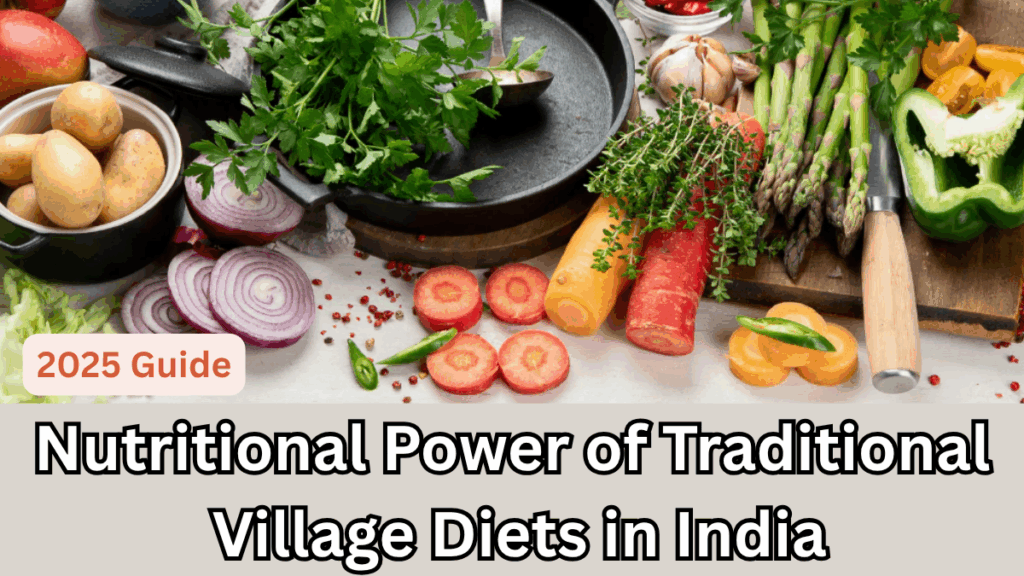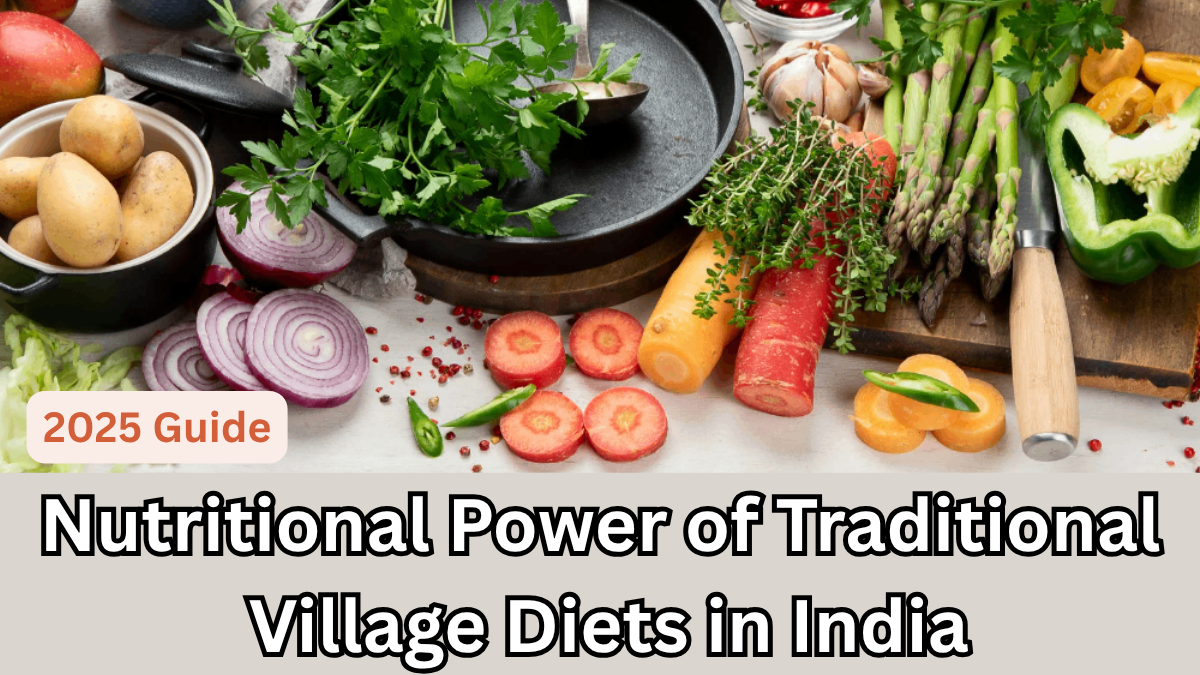In an age where fast food dominates, there’s something incredibly refreshing about going back to our roots — to the food habits of rural India. Village diet nutrition isn’t just about eating simple; it’s about consuming wholesome, unprocessed, and naturally grown foods that have nourished generations.
This 2025 guide explores the power of traditional rural foods and why they continue to stand the test of time when it comes to health and well-being.

Why Traditional Village Diets Still Matter
Traditional diets in Indian villages are not merely about sustenance — they are deeply tied to culture, seasons, and local farming practices. They offer a balance of carbohydrates, proteins, fats, and micronutrients, often without the need for supplements.
Some reasons why village diet nutrition remains relevant:
-
Fresh and local: Foods are sourced from local farms, ensuring minimal processing
-
Seasonal eating: Diets change with seasons, providing natural immunity boosters
-
Balanced meals: Traditional combinations like dal-rice, bajra-roti with vegetables, or fermented foods aid digestion and overall health
-
Cost-effective: Nutritious and filling without burning a hole in the pocket
Key Components of Traditional Rural Foods
Here’s a breakdown of the most common and nutritious components found in traditional rural foods across India:
| Food Category | Examples | Nutritional Benefits |
|---|---|---|
| Grains & Millets | Bajra, Jowar, Ragi, Rice | Rich in fiber, iron, and complex carbs |
| Pulses & Legumes | Moong, Urad, Masoor | Excellent protein source and B vitamins |
| Seasonal Vegetables | Gourds, Spinach, Beans | Packed with antioxidants and minerals |
| Fermented Foods | Buttermilk, Kanji, Pickles | Promote gut health and aid digestion |
| Healthy Fats | Mustard oil, Ghee, Groundnut oil | Boost immunity and energy levels |
Regional Diversity in Village Diet Nutrition
India’s village diet nutrition varies beautifully across regions.
-
North India: Bajra rotis, sarson ka saag, homemade buttermilk
-
South India: Ragi mudde, dosa with fermented chutneys, coconut-based curries
-
East India: Panta bhaat (fermented rice), fish curries, leafy greens
-
West India: Jowar bhakris, sprouted pulses, groundnut chutneys
Each of these diets is deeply connected to the local climate and farming patterns, making them sustainable and healthy.
Modern Relevance of Traditional Diets
Even in 2025, nutritionists are recommending a shift back toward traditional rural foods. Why? Because these diets:
-
Reduce dependency on ultra-processed foods
-
Support long-term gut health
-
Help manage lifestyle diseases like diabetes and hypertension
-
Are environmentally sustainable
FAQs
1. Why is village diet nutrition considered healthier than urban diets?
Village diets focus on fresh, seasonal, and minimally processed foods, which provide better nutrition and fewer harmful additives.
2. Can traditional rural foods help with lifestyle diseases?
Yes. Their high fiber and low sugar content help manage diabetes, heart health, and weight effectively.
3. How can urban dwellers incorporate village-style diets?
Start by adding millets, seasonal veggies, and fermented foods into your daily meals. Also, choose local produce over packaged goods.
4. Are these traditional diets affordable?
Absolutely. Most traditional rural foods are locally grown and pocket-friendly, making them accessible for all income levels.
Click here to learn more
